
Guests
- Marc Lamont Hilljournalist, distinguished professor of African American studies at Morehouse College and author of Nobody: Casualties of America’s War on the Vulnerable, from Ferguson to Flint and Beyond.
Charlotte-Mecklenburg police have yielded to days of protests and released two videos of the fatal police shooting of Keith Lamont Scott. One video is from a police dashboard camera, the other from an officer’s body camera. Police say they also have more video that they have not released. The Scott family is asking the police to release all of the videos. The dashboard camera video shows Scott exiting his vehicle and taking steps backward with his arms at his sides. Police fire four shots at Scott, and he falls to the ground. The body camera video shows Scott on the ground after being shot. “The lesson is: Activism works. Organizing works. Grassroots efforts work,” says Marc Lamont Hill, journalist and distinguished professor of African American studies at Morehouse College. This comes after NBC on Friday released the gut-wrenching cellphone video of Scott’s wife witnessing her husband shot and killed at the hands of police.
Transcript
AMY GOODMAN: Unlike in Tulsa, where they released the, to say the least, extremely damning footage—
MARC LAMONT HILL: Yes.
AMY GOODMAN: —damning to the Tulsa police, of the police shooting, here in Charlotte, it took days of protest. And then, finally, it seemed that the release of Rakeyia Scott’s video, the wife—
MARC LAMONT HILL: Yeah.
AMY GOODMAN: —definitely forced the hand of the Charlotte police chief in releasing—I don’t know why they haven’t released all, because you assume they’re going to release the videotape that vindicates them the most.
MARC LAMONT HILL: Right.
AMY GOODMAN: But they released two videotapes—one a body cam on an officer and one dash cam on a police vehicle.
MARC LAMONT HILL: Absolutely. So, the first thing here is the lesson is: Activism works. Organizing works. Grassroots efforts work. Too often people say, you know, “Why are they out there?” The truth is, if there weren’t a spectacle, if there weren’t a dramatic kind of protest, we don’t see that video come out. The state was committed to not releasing the video. They said it obstructs the investigation. They said it undermines the process of justice. That’s unimaginable to me how that could be possible, but that’s what—that was their argument.
But they also said that once you see this tape—you know, I spoke to police officers in the state and in that police department—they said, “When you see this tape, you will completely understand that the protesters were wrong and that we were completely in the right here.” And to your point, Amy, if they had anything exculpatory, they would have offered it, right? They would have offered the most positive representation of themselves on tape as soon as possible. They were unable to do so. At best, they could offer a tape that was wildly inconclusive.
And this isn’t just an issue with this particular case. This is a—the state Legislature is putting forward legislation to stop these tapes from being released. They have no commitment to doing that.
AMY GOODMAN: Now, this is key, because I heard on the networks, repeatedly wrong last week—
MARC LAMONT HILL: Yeah.
AMY GOODMAN: —saying a law is right now in place that prevents the police chief from releasing the video.
MARC LAMONT HILL: Right.
AMY GOODMAN: In fact, it is going into effect—it was passed, and it was signed into law by Governor McCrory—on October 1st.
MARC LAMONT HILL: Right.
AMY GOODMAN: So it is not in place right now.
MARC LAMONT HILL: Absolutely not. They could absolutely release this video right now. The fact that they have one in the future suggests that they have no intention of releasing such a video, that they don’t believe that that’s the right thing to do, but they could do it right now. There’s no legal protection.
AMY GOODMAN: It is very frightening, though, this law that’s going into effect, because the point of the body cams and the dash cams, that the police departments have gotten millions of dollars to equip themselves with—
MARC LAMONT HILL: Yeah.
AMY GOODMAN: —is to make them more publicly accountable.
MARC LAMONT HILL: Right.
AMY GOODMAN: But now if that information is kept by the police, it only empowers the police further. They’re the only ones that will have this information.
MARC LAMONT HILL: That’s exactly right. And again, that law would presume that police always act in the public interest, that there’s a level of honesty and transparency, and a lack of corruption within police departments around the country. And we see repeatedly that that is not the case. Oftentimes when you file a report against police, whether there’s a citizen complaint review board or whether you just go through a normal kind of internal affairs process, the police take your report, they look at it, and then write their report in response to what you wrote. They give the officer who’s being complained about the opportunity to respond to what you said. So if the video comes in and they’re able to rewatch the video, they can then construct a narrative ostensibly to respond to what they saw as opposed to what actually happened.
AMY GOODMAN: And the fact that along with the video cam and the body cam tape, they released these three pictures. One, a gun that they say that Scott had in his possession—they’re not saying how, and, again, it’s an open-carry state.
MARC LAMONT HILL: Right.
AMY GOODMAN: The other, an ankle holster. Could it have been in an ankle holster? Would they have even known he had it? Because they are saying it is not clear that he had the gun in his hand. And the other, a marijuana blunt.
MARC LAMONT HILL: Right.
AMY GOODMAN: I mean, showing the marijuana cigarette seems to show how desperate the police are to implicate in any way they could. What does that have to do with anything?
MARC LAMONT HILL: Right. It’s a bizarre kind of thing. But again, they’re trying to shape public opinion, because there’s an idea that there is a criminal class out there, and criminal class deserves to be in prison, criminal class deserves to be on the other end of state violence. And so, if we can show that this is a guy with a criminal record who’s smoking weed in a car, then he must have done something wrong. The truth is, lots of people smoke weed, and most people don’t shoot cops. The idea that he was in his car rolling a blunt and somehow still holding a weapon, and they could witness all of this while pursuing someone else in a criminal investigation, is somewhat implausible to me anyway.
AMY GOODMAN: Well, let’s talk about the police narrative, the statement they put out, saying that they had come to execute an arrest warrant—not for him, for someone else.
MARC LAMONT HILL: Right.
AMY GOODMAN: And here’s this man in his car, privately, and they say that they see him rolling a marijuana cigarette, and they see that he has a gun. So they leave the scene. They decide not to execute the arrest warrant at that moment. They dress themselves up—I don’t know if it’s putting on the bullet-proof vests—
MARC LAMONT HILL: The vest. Well, it was an identifying vest to show that they were police.
AMY GOODMAN: Identifying vest.
MARC LAMONT HILL: Yeah.
AMY GOODMAN: So they clearly are—now must be talking to a supervisor: “We’re not going to do what we planned to do.”
MARC LAMONT HILL: Right.
AMY GOODMAN: “We’re going to do this other thing.”
MARC LAMONT HILL: Right.
AMY GOODMAN: Not clear what was wrong, again, even if he had a gun.
MARC LAMONT HILL: Right.
AMY GOODMAN: They come back, and then they go after Mr. Scott.
MARC LAMONT HILL: Right.
AMY GOODMAN: And you have, interestingly, though the dash cam and the body cam tape doesn’t show the moment he dies, you do hear Rakeyia Scott, his wife, so that means they can hear her, because it’s on their bodies, this body cam.
MARC LAMONT HILL: Right.
AMY GOODMAN: You hear her shouting not to shoot her husband.
MARC LAMONT HILL: Exactly. Now, of course, an officer would say, “Well, just because she tells us not to shoot, we can’t not shoot if we feel like there is a lethal threat.” But when you look at the video, it’s hard to imagine how there was a lethal threat. He gets out of the car. He opens the door. He’s using his right hand; he’s right-handed. So, if he’s holding a weapon, he’s holding it in his left hand, which is somewhat implausible if he’s about to get into a shootout with police. And he’s backing away, and there’s no indication that he was making an aggressive move. We’ve watched white citizens, with guns, be subdued and arrested without any gunfire, yet somehow a black person, with or without a gun, always seems to end up in this—with this outcome.
AMY GOODMAN: Well, you have the Charlotte protester who said, you have a man who set off a bomb in New York, who you call a terrorist.
MARC LAMONT HILL: Right.
AMY GOODMAN: He then is caught by police in New Jersey, and he shoots two of them. And even him, they do not kill, they bring in for questioning.
MARC LAMONT HILL: Right.
AMY GOODMAN: And she says, “We’re not like worth even asking a question of?”
MARC LAMONT HILL: And this is the point. And this is where we have to get into a deeper level of analysis, because the simple response from some people is: “Well, these cops didn’t put on their vests this morning. They didn’t get dressed this morning and say, ’We’re going to go execute some guy.’ They didn’t see some guy in a car and say, ’Let’s just go and kill a black guy.’” And I agree. That’s not the issue.
The issue is there is something about black bodies, particularly in public space, that make them viewed as more violent, that make them more prone to violence, that make them seen as a heightened threat than other people. So, the police officer intuitively thinks that this person needs lethal force, intuitively thinks that this person needs a greater level of aggressiveness. And even the fact, as you said, in an open-carry state, that they see a guy with a gun—they didn’t see a guy with a gun, they saw a black person with a gun. A white guy in his car with a gun, and particularly with a holster—a holster suggests that you—oftentimes, that you actually bought the gun legally and that you’re simply carrying it. They see this, and they don’t say, “Oh, maybe this is a citizen who has a gun.” They say, “Oh, no, this must be a criminal.” That type of presumption goes to a psychological level of racism. It may not be racism at the level of intent—”We want to go arrest or shoot a black guy”—but it is a level of racism that says that when we see this person, we presume that they’re violent, we presume that they’re criminal, and we can’t see any other way out of this than lethal force.
And then the dangerous part about that is that they will then go into a courtroom at some point, and a jury of their peers will invoke a reasonable man standard or, maybe even under statute now, a reasonable officer statute—right?—for a police officer, reasonable officer standard, and say, “What would I do under the same circumstances?” And the problem is, because so many of us have a kind of narrative of fear of black bodies in our psyches, we’ll sit there and say, “You know what? I would have done that, too. I would have made the same decision as those officers,” not because it’s ethical, not because it’s moral, not because it was the only way out, but because we have kind of codified a irrational and unacceptable fear of black bodies. And that’s what’s so terrifying about this. This is why they keep getting off.

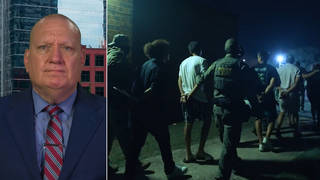

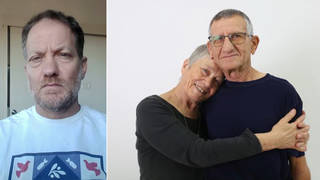




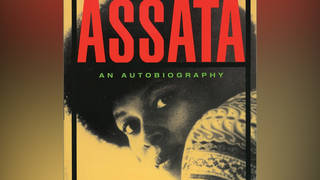

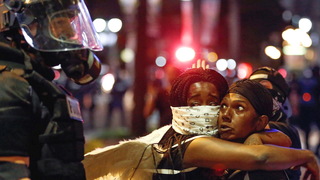
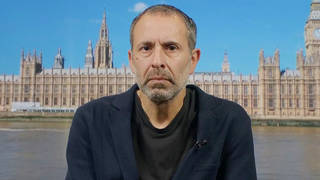
Media Options